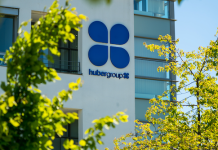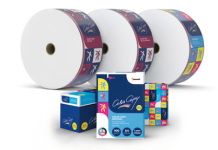As part of its initiative to assist users in meeting environmental and sustainability goals, Konica Minolta, under its Eco Vision 2050 banner, has pledged ambitious 2015 CO2 emission reduction benchmarks. Cutting CO2 emissions will, the company says, contribute to its mission of helping to prevent global warming.
To this end, Konica Minolta South Africa is highlighting its major fiscal 2015 targets, with its base year fiscal 2005. Technological innovation is seen as the driving force to achieve sustainable business development with reduced environmental impact. So says Andrew Griffith, product manager for office products at Konica Minolta South Africa, who believes that companies need to embrace green IT as part of their optimisation processes in order to gain major business benefits.
By 2015, Konica Minolta will reduce CO2 emissions in four major areas of product lifecycle: usage, manufacturing, distribution, and sales and service. Overall, the company will see a 20 percent reduction in CO2 emissions, Griffith said.
By both rationalising the number of devices used, and replacing those utilised with newer, more innovative office products, businesses can meet both environmental and business goals by lowering carbon emissions, decreasing wastage, improving sustainability, reducing power consumption and containing costs.
The company’s ambitious targets include a 60 percent reduction in CO2 emissions from product usage; a 10 percent decrease (per unit of sales) from manufacturing; a 30 percent cut from distribution; and, per unit of sales, a 50 percent reduction from sales and services.
By employing the Life Cycle Assessment (LCA) method, we are in a position to reduce CO2 emissions effectively, said Griffith. Throughout the product life cycle, data on carbon emissions is collected and assessed and, on this basis, appropriate measures to reduce them are developed and implemented into each phase of the product life cycle.
The organisation uses proprietary technology as well as best practice methodology to significantly reduce CO2 emissions. These include Simitri HD, a polymerised toner developed by Konica Minolta that reduces environmental impact during production in comparison to conventional toner manufacturing methods. Simitri HD toner, in comparison to pulverised toners, cuts CO2 emissions by 33 percent.
In addition, induction heating fusing technology is used to create an energy-efficient fusing unit. Low power mode and sleep mode further reduces power consumption, contributing towards Konica Minolta’s exceptionally low typical electricity consumption (TEC) values – reducing running costs and promoting eco-friendly operation.
Konica Minolta’s product design remains true to the company’s objective to continuously improve technology for minimised power consumption and an ever-lower carbon footprint, said Griffith.
And from design to distribution, the company has considered all aspects which go into contributing to carbon emissions. As part of our 2015 objectives, the company is utilising improved distribution routes – proactively restructuring worldwide logistics facilities and focusing on a shift from aircraft and trucks, to ships and railways.





















